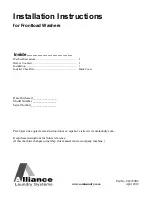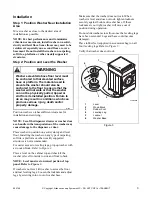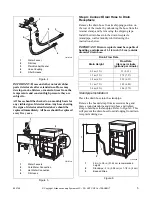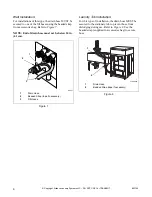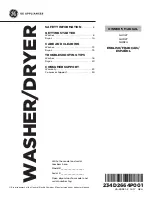
© Copyright, Alliance Laundry Systems LLC – DO NOT COPY or TRANSMIT
3
802749
Installation
Step 1: Position Washer Near Installation
Area
Move washer as close to the desired area of
installation as possible.
NOTE: For best performance and to minimize
vibration or movement, install washer on a solid,
sturdy and level floor. Some floors may need to be
reinforced, especially on a second floor or over a
basement. Do not install the washer on carpeting,
soft tile, a platform or other weakly supported
structures.
Step 2: Position and Level the Washer
Position washer so it has sufficient clearance for
installation and servicing.
NOTE: Use of the dispenser drawer or washer door
as a handle in the transportation of the washer may
cause damage to the dispenser or door.
Place washer in position on a solid, sturdy and level
floor. Installing the washer on any type of carpeting,
soft tile, a platform or other weakly supported
structures is not recommended.
For easier access to leveling legs, prop up washer with
a wooden block. Refer to
Figure 3
.
Place a level on the cabinet top and check if the
washer is level from side to side and front to back.
NOTE: Level must rest on raised portion of top
panel. Refer to
Figure 3
.
If washer is not level, tilt washer to access the front
and rear leveling legs. Loosen the locknuts and adjust
legs by screwing into or out of washer base.
Make sure that the washer does not rock. When
washer is level and does not rock, tighten locknuts
securely against bottom of washer base. If these
locknuts are not tight, washer will move out of
position during operation.
Do not slide washer across floor once the leveling legs
have been extended. Legs and base could become
damaged.
Place rubber feet (supplied in accessories bag) on all
four leveling legs. Refer to
Figure 3
.
Verify that washer does not rock.
Washers elevated above floor level must
be anchored to that elevated surface,
base or platform. The material used to
elevate the washer should also be
anchored to the floor to ensure that the
washer will not walk or that the washer
can not be physically pulled, tipped or
slid from its installed position. Failure to
do so may result in conditions which can
produce serious injury, death and/or
property damage.
W306
WARNING
FLW2290N
1
Level
2
Wood Block
3
Rubber Foot
4
Leveling Leg
5
Locknut
6
Washer Base
Figure 3
FLW229
1
5
3
4
6
2
Summary of Contents for 802749R2
Page 11: ......

